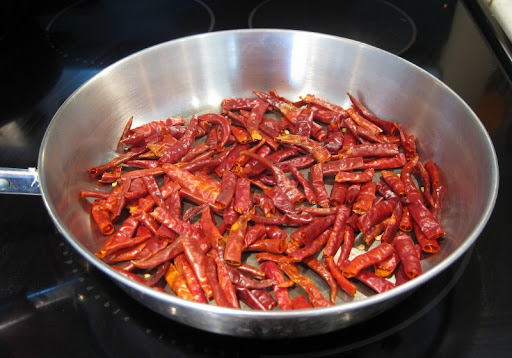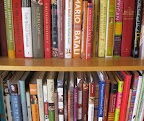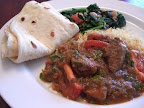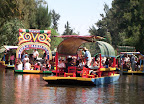Chile de Arbol Paste

Meet my latest obsession - chile paste.
I've been making this stuff for the past several months, and we've been using it in everything. Made simply from chile de arbol and water, it is perfect for adding a deep, intense and yet neutral heat to all sorts of food. The neutrality of it is great because it is not cuisine-specific - we've used in dishes ranging from Huevos Rancheros to Mapo Tofu.
It is also super easy to make and dirt cheap to boot. A big bag of chile de arbol costs about 75 cents (we get the chiles from Northgate Market, our local Mexican mega-grocery).

I destem the chiles and cut them in half to get out any seeds I easily can (no need to try to get every last seed). Then I toast them in a frying pan until they darken, but do not burn.

Here they are just out of the pan:

After toasting, I soak them for about half an hour in just enough hot water to cover them. I put a small plate on top to keep them submerged.

After soaking, they get blended with enough of the soaking water to make the blender "catch". I find that starting on low power and then increasing it makes it less likely to spew all over the inside of the blender. Also, be careful not to open the top of the blender until it has completely stopped. I learned that lesson the hard way - chile de arbol in your eyes is not a good thing...

Blend until the consistency is very smooth, and voila - you've got chile paste!

In addition to being a great ingredient on its own, it also provides a perfect base for making taco shop hot sauce.
Makes about 1 cup.
Water
Destem the chiles and cut them in half, removing any seeds that shake out easily.
In a frying pan over medium high heat, toast the chiles while constantly stirring them around until they darken but do not burn (about 5 minutes). If your stove has an exhaust fan, you may want to use it.
Place the toasted chiles in a large bowl, discarding any seeds that fell out during the cooking process. Add enough hot water to just cover the chiles, and put a small plate on top of them to keep them submerged. Soak them for about a half hour.
Remove the chiles from the soaking liquid, and place them in a blender with enough of the soaking liquid to allow blending (about 1/2 to 2/3 cup).
Blend first on low power, and then on high until you have a smooth paste.







I've never thought about making my own chili paste like this. Awesome! I'll have to try this with some of the dried chilis I have on hand.
ReplyDeleteDefinitely give it a go - just be warned that if you are like me you will be overcome with an irrational urge to add it to everything...
ReplyDeleteThis is wonderfully simple. I've made ancho chili pepper before by spinning dried chilies in the coffee grinder, but this paste looks decadent.
ReplyDeleteHi Dave - yep, it doesn't get much simpler than a recipe with two ingredients, one of which is water :-)
ReplyDeleteNot know, I have to ask how long will it last for?
ReplyDeleteThat is a good question. In our experience, it does well refrigerated for a month or so. After that, it has started to "change" a bit on us (fermenting, perhaps?). This is not surprising due to the lack of any preservative agent.
ReplyDeleteI'm guessing that it would hold longer if salt or acid (like vinegar) are added - but then it would be less neutral in flavor.
Have you tried freezing the extra? I'd love to make this but I don't know if I can move through 1 cup that quickly.
ReplyDeleteHi Jered - we've never tried freezing it, but I can't see why it wouldn't work.
Delete